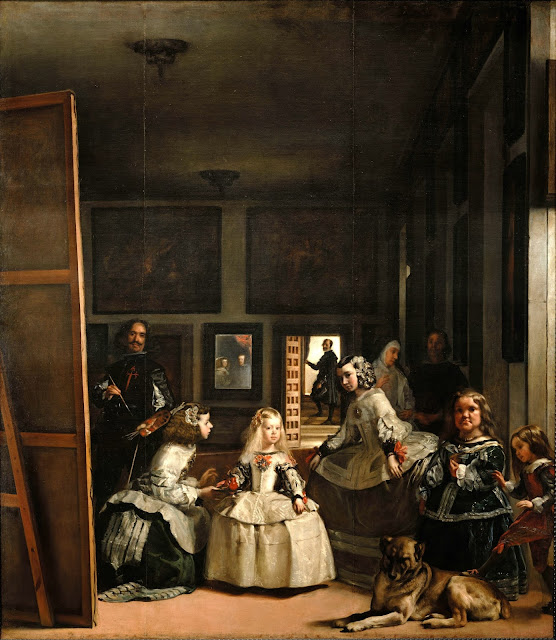Las Meninas and the Morphology of Beauty in the Technical Image
Goethe said that beauty is perfection combining with freedom. This is the form of art, its dominion the extent of its reach, and its essence harmonization with law and time. Skill is only a minor part of the work, determined by necessity of these other factors. However, what you'll find in most interpretations today is criticism of art based on the technical qualities alone, as if all its meaning could be traced through the individual components - a pantheism of symbols.
At the highest there is divine and elemental law, lesser factors are the natural, historical, national, and individual. A great work of art, as Hölderlin made clear, was formed of the divine, the highest objective, but may be experienced subjectively without the inner laws being diminished. The festival or rite is the greatest experience of art, where harmony with law is a community event, a communion with time. Often this perfection of art occurs as an occasion of the seasons, with contests, drinking parties, and minor works scattered throughout the festival atmosphere. The individual works are not so important in themselves, however, together they form a transitional world of creation - and in their difference they unfold as the beauty of the entire event. This is the total work of art in the ancient sense, rather than Wagner's understanding.
One should also remember that which is greater than art, or even the festival: the oracle who is chosen by the Muses to deliver the community to a new dominion either through truth or lie; those who are raised up from the earth by the gods; killed by a god to become a constellation of law; all of the great metamorphoses; the condition of wealth in war, as we see in the contests over armour in the Iliad, or the funeral games. The spontaneous and elemental are often of a higher order of being than any artistic sense, beyond its creation. And as Hölderlin rightly pointed out, our shadow beneath the tyranny of Greek memory can only lead to an artistic impoverishment.
The triumph of the painting points to something quite different, a reserved world, but also one in which historical time has become determinate. One looks back even as he steps forward, as there is little future light; surrounded by memories, but also images of becoming which is not entirely known in its end. The painting achieves technical perfection, but deprived from the festival or formative order its power and law can only diminish.
However, rather than its technical qualities alone, the world of illusion, Las Meninas should be seen in what it perfects, what it frees, and what it harmonizes with. It is in this that one may sense its reflection as a means, an occasion in becoming. It would be too simple to see the decline of the monarchy alone, and this was certainly not the intention in creating the image. Velasquez was close to the king and the family, and what we see is, apart from the overwhelming failures of the monarchy, its retreat into the simple life. Or to avoid critical readings, and maintain a focus of becoming, we might say that the family is at peace with the wealth of the new forming order. The monarchy does not fall, rather it extends its dominion and must elevate all those close to it, deepen their class unity and even bring them in as a family.
One may be reminded of Bruegel's Misanthrope and Magpie on the Gallows. Rather than the technical reading which overly modernises the painting, as if it were an Escher work, one may see instead an invisible framing through the impossible object. Through the simplicity of the court, its whole coming dominion, the retreat of the monarchy, but also its greater genealogy.
The very figures of the painting would not have been possible if Velasquez had not been one with the family. What we see is a new order of the court, completely at ease with a new set of laws which would bring judgement through wealth and the exchange of artistic creation. A new grounding appears in which domestic life and the simple must meet with every being, but also in which technical measures, the legislation of daily activities is a constant reordering. Aside from being at peace with the family, the wealth of a democratising nobility, there is also the hidden image of time - of the portrait for which there is no time. Where for some kings the portrait became the whole of his dwindling nobility, others cast themselves within the new formative order, the metamorphoses of nature as it began to enter the castles, courtyards, and family rooms.


Comments
Post a Comment